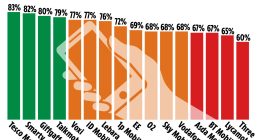
Making sure you get paid what your worth is essential to business success. These tips can help you set your rates so you hit the sweet spot with customers — not too high and not too low.
August 15, 2019 5 min read
Opinions expressed by Entrepreneur contributors are their own.
The following excerpt is from Laura Pennington Briggs’ book Start Your Own Freelance Writing Business. Buy it now from Amazon | Barnes & Noble | Apple Books | IndieBound
One of the easiest ways to determine your rates for freelance writing projects is to do research and see what’s already out there in the market. Be aware, however, that you’ll find a dramatic price range. You’ll find people who charge the bottom end of the spectrum and are comfortable making that amount of money, all the way up to the people who have a smaller client pool because of their expensive rates but still are able to find enough of it to book them full time.
Start considering your own rates by thinking about your overall experience and knowledge of the market. Factors that will influence your rates include:
- Your experience in the field or the writing world
- The technical expertise or amount of research required for the project
- The estimated time to complete the project
- Whether other aspects of your time, like conducting interviews, will be part of the project
- The length of the project
Related: 6 Ways to Find Clients Online and Offline
How most writers charge
How a writer charges depends entirely on their preference, the industry, and the client’s willingness to accept that rate. Most writers start their career online with hourly rates, since this is the easiest way to determine what to charge. Few writers charge per page, although that method of pricing is common for editors. Many writers charge per word or per article.
Hourly rates are tricky in freelance writing. Most nonwriters have no concept of how long it takes to write something. That means clients are hesitant about hiring someone who appears “too slow” even if the time involved is perfectly reasonable. It also means fast writers get penalized for working quickly. So an hourly rate is a good starting point for creating an estimate, but it’s not something most professional writers rely on over the long run because clients tend to prefer upfront pricing in terms of a per-word rate with an agreed maximum length or a flat fee based on the writer’s quote.
Estimating how long it will take you to complete a project is the next thing to consider when developing a fixed rate. Your estimate might not be perfect, but it’s a good idea to use your own experience of creating your writing samples to determine what your fixed rate might be. Your fixed rate should include all elements of creating the writing piece itself, from research and writing to editing and submission. Many clients will also want at least one round of revisions, so ensure that you’ve added that in as well.
Your base rate is the hourly rate you’re comfortable with — which you believe the market will bear — by the number of hours you think it might take you to complete the project.
There are other considerations to factor in, such as extra elements your clients might want you to add. For example, if you’re doing SEO writing, a client might request that you include SEO keywords and links to other pages on their website. A person writing a whitepaper will need to factor in time for interviews with important stakeholders. If a client asks you for other elements, such as posting the article to their website, distributing it on a press release service, adding in photos, or more, this can increase your overall price.
Related: The Fine Art of Client Pitching
Once you have your baseline price, you have a number to begin working with, although you might not always charge this rate. Each project will be different, and you might also wish to reward clients who are hiring you for multiple projects or who are putting you on retainer.
Another important element to consider is what you intend to accomplish with your freelance writing business. If you’re simply looking to grow a side hustle and add additional income, then your hourly rate might not be as important to you as someone who is attempting to replace their full-time job.
This online calculator (https://www.calculators.org/savings/wage-conversion.php) will help you determine your financial goal and the hourly rate you need to charge to achieve it, assuming you work a certain number of hours per week.
Remember that not every hour you will be working is a billable one, because you will be spending a lot of time marketing to clients as well as time doing administrative tasks, such as submitting invoices. Further, you probably won’t work every week of the year since you’ll want some sick time and vacation days, so adjust your rate accordingly.









